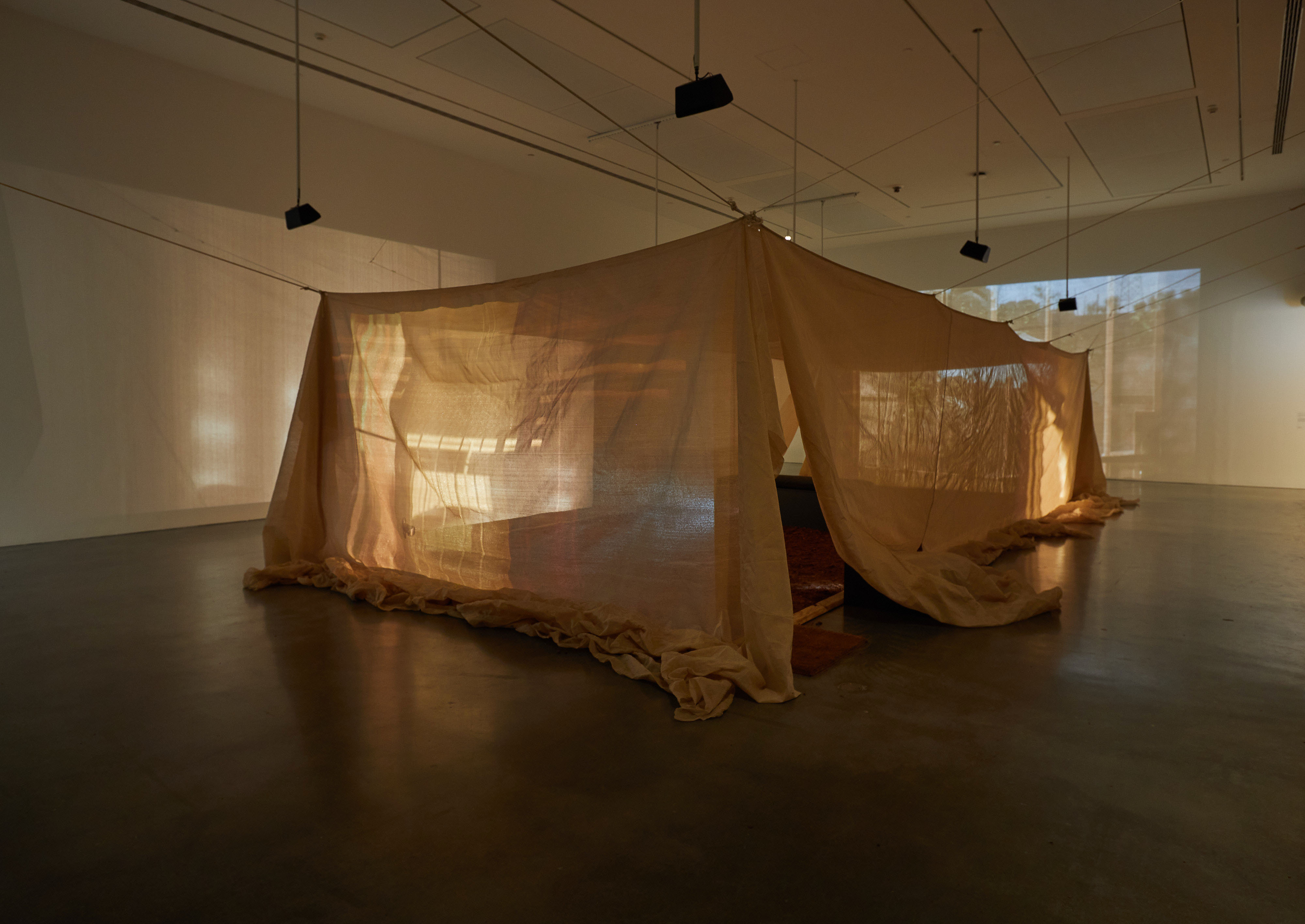




Skin Shade Night Day (2022)
Porter Street Commission at ACE Gallery, Adelaide, AustraliaSupported by the Government of South Australia (Arts SA)
4-channel video and 12-channel sound installation with shade cloth, rope, fishing wire and coconut coir, 45 minutes
Curator: Patrice Sharkey
Producers: Chris Luscri, Anastasia Comelli
Sound mix & spatialisation: Josh Peters
Colourist: Niklas Malkin
Photography: installation view, The National 4: Australian Art Now, Museum of Contemporary Art Australia, Sydney, 2023, photograph: Jenni Carter, Anna Kučera
Video Documentation: Ben Golotta
Skin Shade Night Day explores the daily routine and rituals practised by the artist’s Cambodian-Australian family, which are reperformed and documented through a process of embodied empathy. Acts of service, such as gardening and cooking, play out as echoes from the past across a sound and image installation displayed in a shadehouse. Spectres, shadows and aural textures conjure up impressions of a place that remembers how its inhabitants once lived.
Artist Statement
The first shade house was built with a wooden structure, planted in the ground of a rental property my family moved into after many months of finding a place for the project. It served as a place for my parents to grow their own garden—something I felt like they needed after selling the farm we had lived in for 17 years. Living with them again was also an opportunity to immerse myself in their lifestyle, largely unchanged since migrating from Cambodia over 40 years ago, and a chance to embody their routine, often done by hand.
While weeding with a hoe, my mum told me how her brother injured himself with one during the Khmer Rouge — something I always think about now when I use the tool. Physically experiencing these things for myself was a way for me to understand what they endured. Through gardening, I came to understand what it was like to look after a living thing everyday, to put in the work for its well-being and to watch it grow, not unlike the effort of raising children.
Closing the windows and making sure the doors were locked were also part of the daily routine. Physical barriers such as screen doors, bars and mesh are both forms of protection and, at the same time, entrap the plants and figures within. The sense of security has always been a priority in my family ever since experiencing a time without it, especially during the Khmer Rouge and refugee camp in the late 70’s and early 80’s. These rituals from the past have endured for so long, shaping my parents’ way of living.
My parents have always been collecting hard rubbish and picking up things left on the street to reuse into something else. This project saw used furniture repurposed into garden beds, plant containers and wooden support for the shadehouse. I realised my parents’ way of creatively transforming the used goods they find available to them is not dissimilar to my process of reimagining the environment around me into a heightened reality.
The only human presence that appears is in the form of shadow figures. My grandma is partially blind and her mental state has been deteriorating — her reliance on sound and increasing paranoia has been channelled into the atmosphere of the work. Every passing shadow becomes a figure once recognised.
While the original shade house continues to be a living and working site, the final shade house evokes the rituals lived, mediated and transformed. It’s a place that conjures up the past where memories and fears echo through its haunted walls.